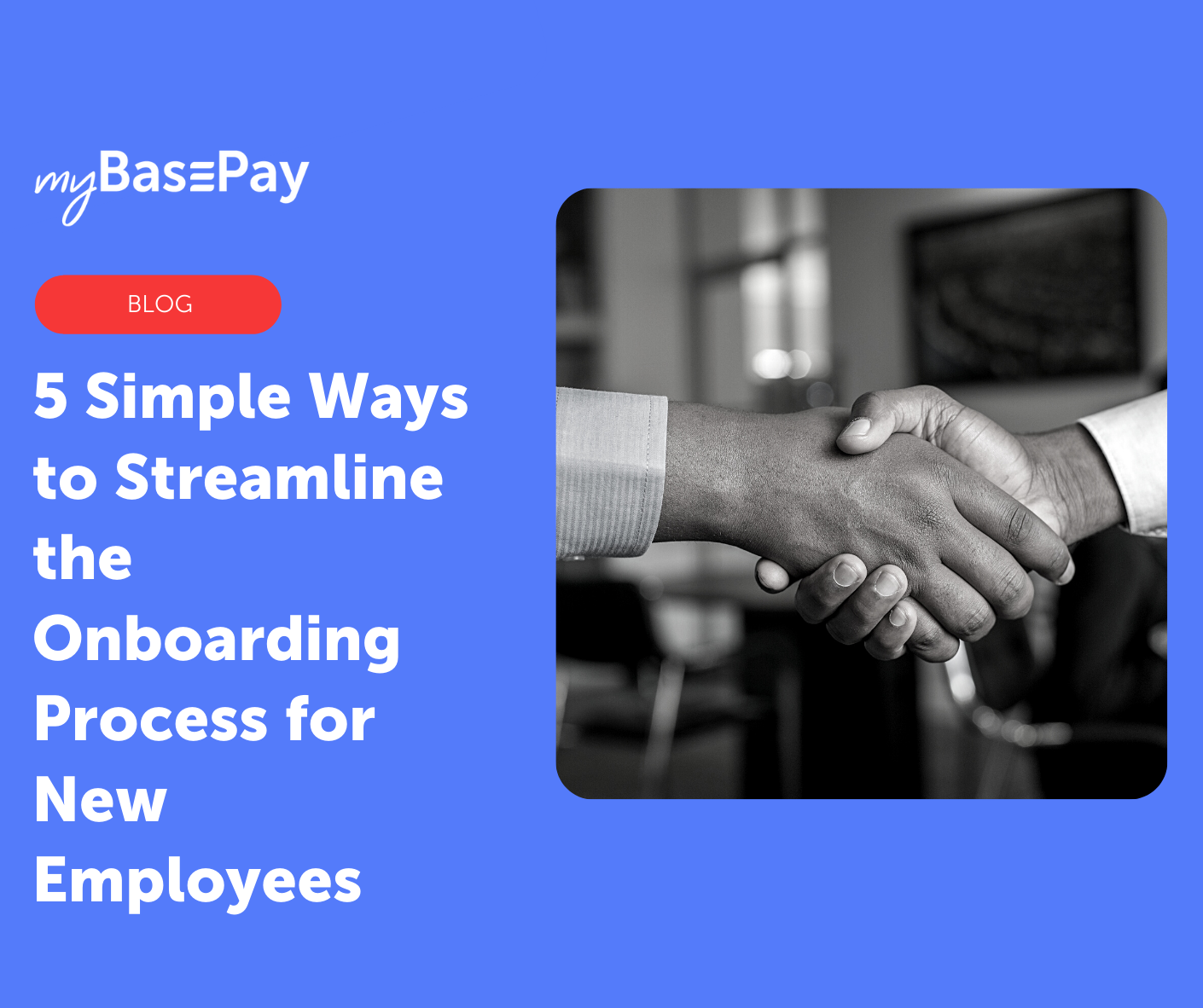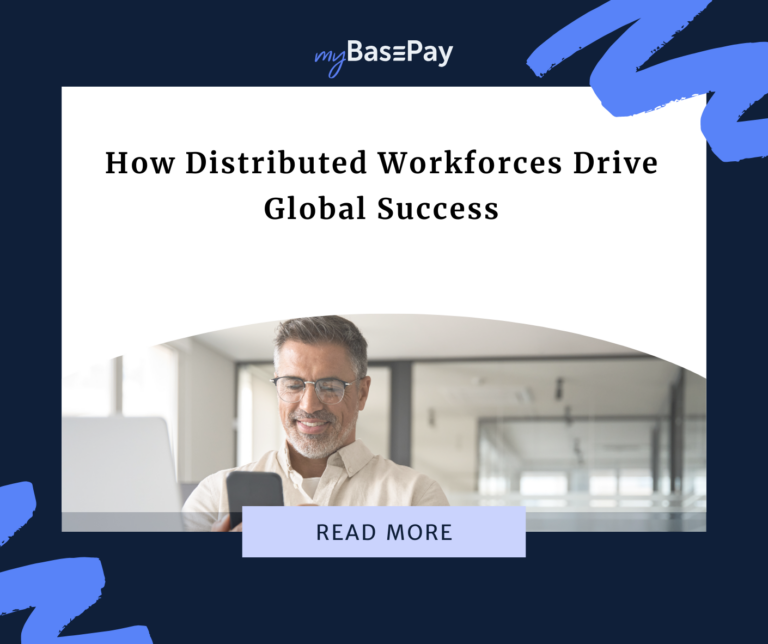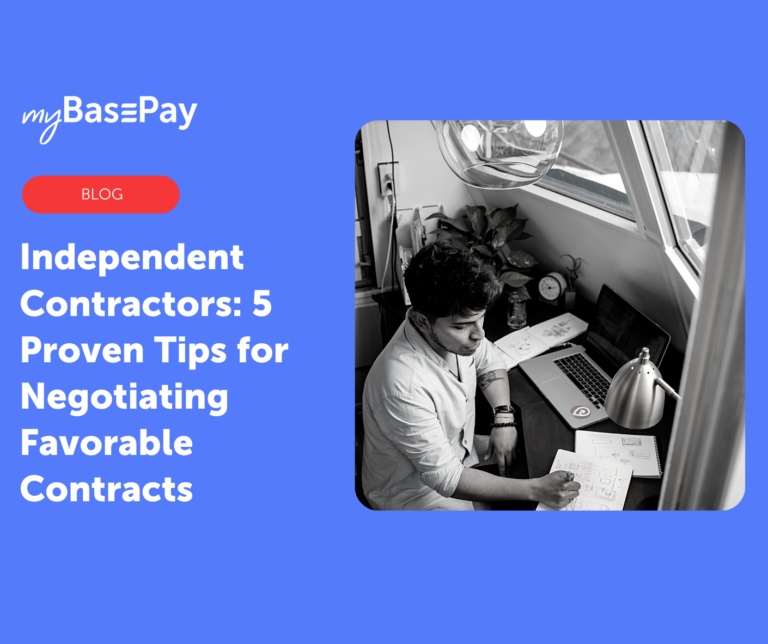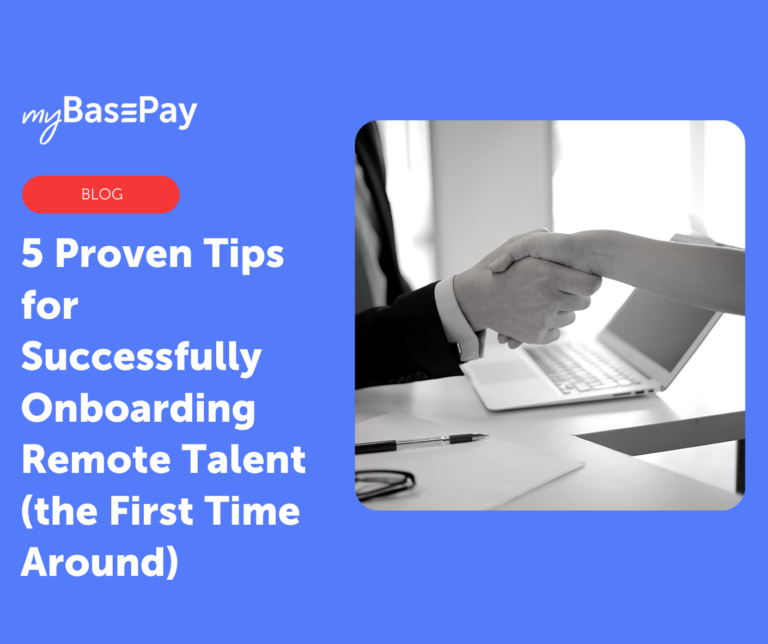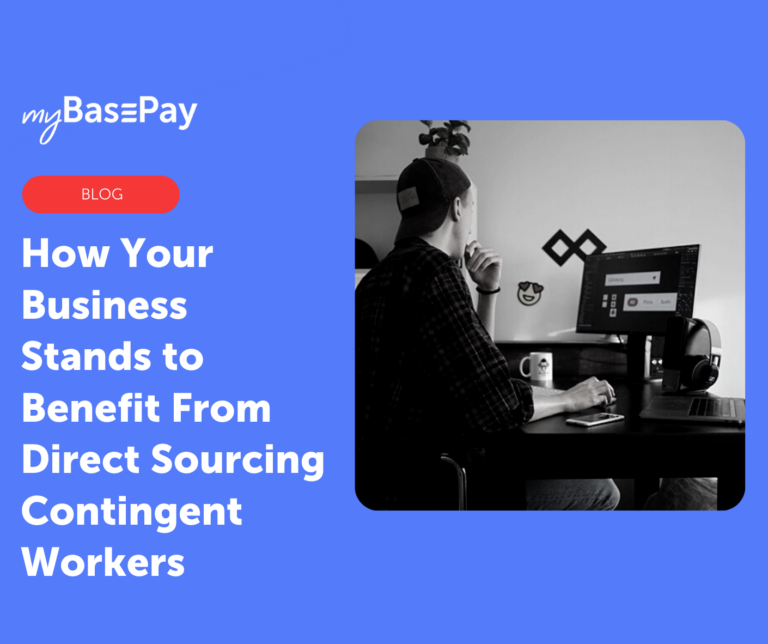5 Simple Ways to Streamline the Onboarding Process for New Employees
As important as it is to recruit and place top talent, what happens after a position is filled is ultimately even more important. The onboarding process is when a new employee becomes acclimated to the company, and when the company helps supply them with the necessary knowledge, tools and equipment to do their job.
For many new employees, however, onboarding can feel overwhelming. From submitting payroll information to HR and introducing themselves to their supervisor to getting to grips with their projects and responsibilities, there is a lot to take in.
This can become even more challenging for remote and independent workers, as virtual onboarding can easily introduce new complexities and miscommunications. By taking proactive measures to streamline onboarding for new employees, you can set them up for success.
1. Take Advantage of Automation Tools
In a myBasePay webinar, “The Advantage of a Marketplace Economy In 2022,” Brian Hoffmeyer, SVP, Market Strategies at Beeline noted the importance of, “… having the right tools and techniques and templates set up so that you’re teed up for success. I think from a technology perspective, it’s about having automation help ensure that those things happen so that humans can concentrate on the things humans do best. […] Let technology do what it can so that humans don’t have to.”
He continued, “We concentrate on things like integrations so that when the person starts they have the Email ID that they need to access the systems. If they’re going on-site, they’ve got a badge, they’ve got the equipment. And so then humans can concentrate on getting the person up to speed.”
With the right automation tools, you can actually begin onboarding before a new hire’s first day of work. Allowing them to e-sign paperwork or sending an automated email that lets them set up an account will ensure that more time can be devoted to meaningful training.
2. Provide a Manageable Flow of Training
It shouldn’t be surprising that the Aberdeen Group reports that 76 percent of employees state that training is most important to them in their first week at a new company. New hires need to clearly understand their duties and responsibilities.
This doesn’t just help them know what tasks fall under their purview — it can also help avoid creating accidental friction between coworkers due to miscommunications over who is responsible for what.
Depending on the position and the scope of the tasks and responsibilities associated with it, however, it may not be a good idea to try to give an employee everything they need to know during that first week.
Supplying too much information can quickly become overwhelming, and can cause crucial issues to be forgotten or overlooked simply due to the sheer volume of training.
In addition to an overview of company processes, new hires need an introduction to company culture, defined milestones for their role, an introduction to their team and supervisors and more. Successful organizations have a plan for when to introduce each of these necessary elements during the new hire’s early time with the company.
3. Assign a Mentor
The sheer volume of information a new hire needs to succeed means that true onboarding often requires at least three months to complete — sometimes longer
Individual, ongoing training and a reliable source of information when questions about company policies or procedures inevitably come up are crucial during these early stages. Because of this, many of the most successful organizations assign a mentor to new hires to help them adapt to the workplace.
In fact, a report from SHRM found that not only do 56 percent of new hires report a workplace buddy or mentor as “very important” when starting their work, but high-performing businesses are 2.5 times as likely to assign mentors during onboarding. A reliable mentor in an unfamiliar setting can help a new hire gain confidence as they get up to speed.
4. Have Clear Parameters for Different Types of Hires
In a time when many organizations use a mix of full-time and contingent talent, having a well-defined classification process for each type of hire is crucial for mitigating hiring risks. Clearly defined protocols for determining if an individual is an employee or independent contractor will help your organization provide each worker with the right tools and information.
This can be especially important when processing payroll and handling other HR tasks. A full-time hire doesn’t want the headache of trying to figure out why taxes weren’t withheld from their first paycheck.
With a well-defined system in place that clearly classifies different types of hires, you can avoid these back office mistakes that distract from an employee’s productive hours. Worker misclassification also carries the potential for government fines and penalties, so it is essential to get it right.
5. Ask for Feedback
Even after the work you’ve put into your onboarding process, you shouldn’t count on everything being perfect. This is especially true when dealing with contingent workers, who tend to come and go at a much faster rate than full-time hires.
As Jon Younger PhD, Forbes Writer & Founder of Agile Talent Collaborative, noted in the aforementioned webinar, “We’re asking the freelancers that we want to work with, ‘What would make this a positive experience for you?’ And there are all sorts of answers to that. It may be, ‘I’d like to teach your guys what I know. I’d like to be part of your team meetings.’ […] This is a two-way street. This is a partnership … Let’s find the mutuality of this relationship. That’s the best way to retain folks. If you’re giving them what they want, as well as getting what you need. That’s a win.”
While this can certainly help align expectations during the interview process, such followup after onboarding can reveal new insights into what you can improve to further improve your processes to create more win-win scenarios.
Creating an Environment Where New Hires Can Succeed
The onboarding process is filled with potential stumbling blocks that can keep a new hire from getting to work quickly, or even negatively impact their perception of your organization.
By facilitating this process in a way that makes the transition easier, you can help new hires get up to speed so they can start making a meaningful contribution to the business that much sooner.
Author: Cesar Romero
Cesar is the Head of Marketing at myBasePay, where he’s responsible for overseeing the company’s content marketing, community, and partnerships strategy. He also co-hosts The Ivy Podcast where he interviews executives from Fortune 500 companies on executive leadership. When he’s not helping startups with marketing and community strategy, you can find him paying it forward by serving as a mentor for leading organizations like StartingBloc, Hive, and Global Citizen Year.
